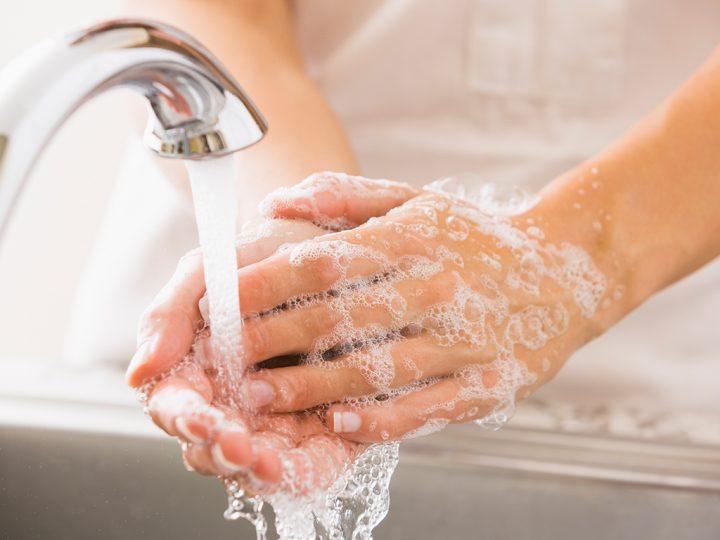Health workers who use hand sanitizer between patients may be more likely to spread flu germs than those who take the time to wash their hands, a recent experiment suggests.

That’s because fresh mucus from infected patients interferes with the ability of the alcohol in hand sanitizer to reach the concentrations needed to deactivate the flu virus, researchers report in the journal mSphere.
Previously, it was recognized that rubbing hands with sanitizer and handwashing with an antiseptic cleanser have similar disinfection effects against flu viruses, said Dr. Ryohei Hirose, an infectious disease researcher at Kyoto Prefectural University of Medicine in Japan who led the study.
WATCH: Back to school immune system boost

“However, in this study, we show that the physical properties … of mucus protect influenza A virus from inactivation by ethanol-based disinfectants,” Hirose said by email. “This increases the risk of (active influenza virus) transmission and hinders the eradication of health-care-acquired infections.”
Researchers did a series of lab tests and computer simulations to examine how much active influenza A virus remained after exposure both to an ethanol-based disinfectant sanitizer and handwashing with an antiseptic cleanser. Influenza A is the most common form of seasonal flu.
Flu virus in wet mucus from infected patients wasn’t destroyed after two minutes of exposure to sanitizer — it took about four minutes for the virus to be completely deactivated. That compares to just 30 seconds with handwashing.
READ MORE: Influenza vaccines might arrive after flu season starts in Ottawa, officials say
To see how mucus might make it harder to fight the flu, researchers dabbed volunteers’ fingers with either mucus or a saline solution containing the flu. Then they tested how long it took to deactivate the virus so it would no longer be contagious.
The ethanol-based hand sanitizer could destroy flu virus in saline solution within 30 seconds. Sanitizer could also deactivate flu virus in dried mucus in a little under eight seconds. But in moist mucus it took almost three minutes.
The key to effectiveness was reaching an alcohol concentration of just over 30 per cent, which happened more slowly in the gel-like consistency of fresh mucus.
WATCH: Can you beat the flu with pre-infected tissues?

These results suggest that until infectious mucus has completely dried, active flu virus can remain on the hands and fingers even after using hand sanitizer, the study team concludes.
Mucus containing the flu virus can take more than a half-hour to dry, the experiments also found.
Handwashing, however, could effectively destroy the flu virus in both wet and dry mucus quickly, the tests showed.
READ MORE: Ontario could face ‘very difficult’ flu season, health minister warns
One drawback is that the experiments don’t reflect what would happen outside a laboratory setting when clinicians cleaned their hands between patients.
Still, handwashing is the best approach when hands have mucus on them because alcohol-based sanitizer can’t physically remove organic material, said Elaine Larson, a researcher at the Mailman School of Public Health at Columbia University in New York City.
“Handwashing is the method of choice for physically removing anything from the hands by mechanically washing them down the drain rather than killing germs,” Larson, who wasn’t involved in the study, said by email.
“Alcohols are preferable, better and faster, for actually killing germs but not removing dirt, residue or organic material,” Larson added. “It is, however, clearly the best option whenever a sink and clean materials (soap, towels) are not available.”
- Canadian man dies during Texas Ironman event. His widow wants answers as to why
- ‘Sciatica was gone’: hospital performs robot-assisted spinal surgery in Canadian first
- Canadians more likely to eat food past best-before date. What are the risks?
- Treatment from female doctors leads to lower death rates, study finds




Comments